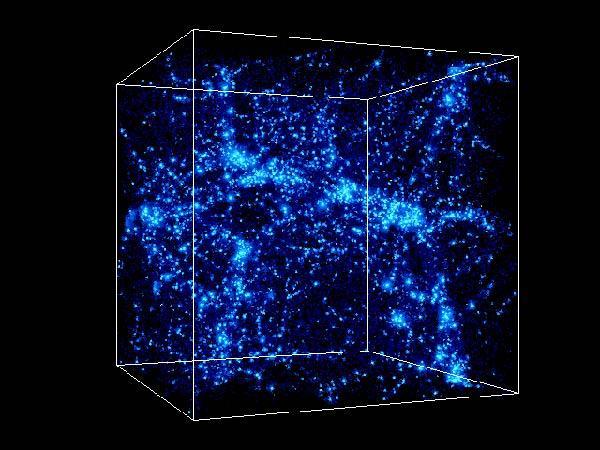Dark Energy
So most of our universe (over 70%) is made up of something called Dark Energy. We can't see it and we don't really know what it is...

Matter - everything that makes up me, you, planets and stars - appears to make up only a very small fraction of the universe, about 4%. Instead, the universe seems to be filled predominantly by a very strange material known as dark energy and it is this material, with it's anti-gravity properties, which seems to speeding up the expansion of our universe. We've known that the universe was expanding since Edwin Hubble made his observations in the 1920s, however it's only in the last 20 years that we've realised that this expansion is actually speeding up! The problem is that we can't directly detect dark energy and this makes it very difficult to understand what it is and whether it really does exist.
Instead we must rely on indirect observations, looking at light travelling from the far reaches of the universe to determine whether the properties of this light has changed during the time it has taken to reach us. A good way to measure the expanding universe is to make observations of distant supernovae (huge explosions which follow the death of large stars) which act as 'standard candles' or 'lighthouses' because we know how bright these object should be. Measuring light from distant supernovae has allowed us to see that it is different to what it should be if these objects were positioned within a static universe. Instead what we see is changes in this light which indicates that these objects are being flung outwards and away from us via some sort of cosmic expansion.
A nice analogy to describe the expansion of the universe is what happens when two points are drawn on the surface of an inflating balloon. As the balloon is inflated, the two points begin to move further and further away from each other and as the material expands outwards, the distance between the two points also increases. Applying this analogy to the cosmos, we could imagine the same happening with two galaxies being pulled apart from each other as the space they exist in expands.
As dark energy is so difficult to detect, scientists have recently been looking for new ways to independently verify its presence within the universe. Whilst at the BBC I was lucky enough to interview cosmologist Dr Chris Blake from Swinburne University, Australia who has recently published two papers reconfirming dark energy via a new set of methods. Blake and his colleagues produced a galaxy map of over 200,000 galaxies and used this information to look at how these galaxies were distributed and how they grew relative to each other. Through this work Blake and his colleagues were able to reconfirm the presence of dark energy and perhaps most importantly were able to determine some of its properties.
I thought I'd use the audio from this telephone interview and spruce it for the next sounds of science episode:
[soundcloud width="100%" height="81" params="" url="http://api.soundcloud.com/tracks/18436704"]
It probably sounds better with headphones (or obviously decent speakers).
Useful links:
http://www.bbc.co.uk/news/science-environment-13462926
http://preposterousuniverse.com/writings/cosmologyprimer/faq.html#dmde